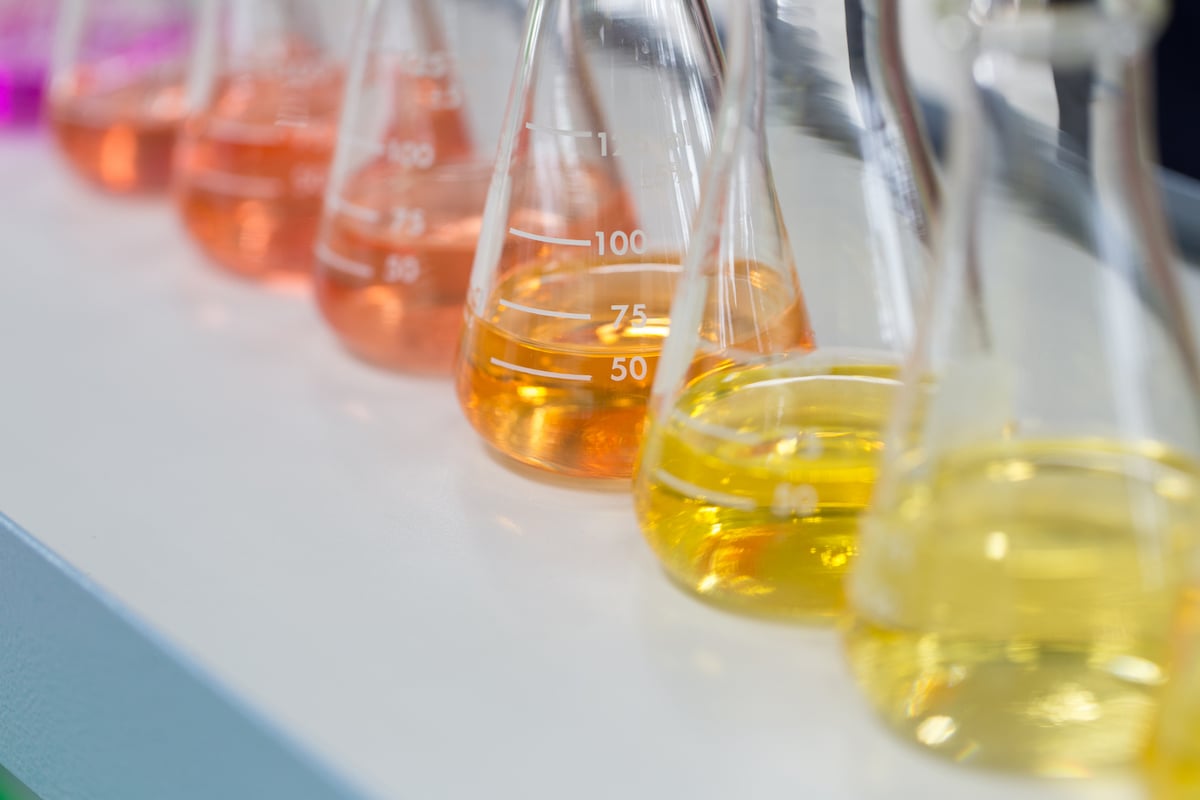
The pH level refers to how acidic or basic a liquid solution is. Measured on a 0-14 scale, a liquid with a pH level of 7 is said to have a neutral balance of acids and bases; liquids with a pH level lower than 7 are considered acidic; and liquids with a pH level greater than 7 are considered basic.
A number of factors can influence a liquid’s pH level. For example, a heavy downpour might drag minerals from rocks into water, and metals from plumbing systems might seep into the water that passes through the pipes.
Why are pH levels measured?
Scientists, researchers, and water treatment managers measure pH levels for a variety of reasons. Water that humans will ultimately consume, directly or indirectly, needs to be kept at certain pH levels. When water gets too basic, it starts tasting bitter and can leave pipes and appliances caked with deposits. On the other end of the scale, when water is too acidic, metals can get corroded. Aquatic and plant life can die, too. Certain science experiments require water to be at specific pH levels to ensure accurate results. The list goes on.
What are the main uses of pH in different industries?
Any industry that uses water—i.e., a lot of them—needs to test pH levels, at least on a periodic basis, to ensure water composition falls within desirable ranges. Otherwise, when pH levels fall outside preferred ranges, food may be unsafe to eat, beverages may be too acidic to drink, spa water may be too irritating to the eyes and skin, and research experiments may reached skewed conclusions, among other bad outcomes.
Here are seven industries that commonly test pH.
1. Wastewater treatment
During wastewater treatment, heavy metals, organic compounds, and other toxic substances are removed from water; pH levels need to be adjusted during this process by adding chemicals to the water to separate dissolved waste from the liquid. Managers at facilities that process sewage or recycle water used in manufacturing need to monitor pH levels to ensure that water can safely pass to the next phase of treatment so that they end up with pure, safe water at the end of the cleaning process.
2. Aquaculture
Aquaculture is a multibillion-dollar industry that is responsible for supplying nearly half of the world’s seafood. To keep aquatic creatures alive and ensure they’re healthy enough to be consumed, companies in this space need to monitor changes in pH levels on a regular basis. Generally speaking, fish thrive in pH levels between 6.5 and 9.0.
3. Food and beverage
It is important to monitor pH levels in the production of any food or beverage product. For example, when water used in beverage manufacturing is too acidic, consumers can potentially damage their dentition. Companies also need to monitor pH levels in food production to ensure their products are safe to eat and of high quality. For example, pork with a pH of 5.6 to 6.0 indicates that a pig was raised well, while a lower pH reading indicates the pig might have lived a stressful life. What’s more, a meat product like salami should have a pH under 5.3 to protect against bacteria growth.
4. Pool and spa water
Whether you’re managing a large community swimming pool or a private spa, you need to measure pH levels to determine how many sterilizing agents (e.g., chlorine) you need to put in the water to maintain a safe swimming environment. When pH levels are too high, water gets cloudier, and swimmers’ skin and eyes may get irritated. When pH levels are too low, swimmers’ skin and eyes may get irritated, too, and your pool or spa’s plaster can get damaged as well. The ideal pH reading for a spa is between 7.2 and 7.8.
5. Aquariums and fish tanks
To keep fish and other aquatic creatures alive—and to keep fish tanks and aquariums clean—many water composition characteristics need to be proactively monitored, including pH. Otherwise, at best, the water in the aquarium or fish tank will look cloudy and, at worst, fish may struggle to survive.
6. Research
Water plays an integral role in many research projects. While the requirements of each experiment are unique, lab science demands highly accurate results. In experiments, researchers need to monitor pH levels to ensure high-quality findings that can be repeated. For example, different types of bacteria thrive in environments with different pH levels. To reach accurate conclusions, it is, therefore, critical to monitor pH levels in any experiment involving bacteria.
7. Hydroponics
The practice of growing plants in a nutrient-enriched water-based solution instead of soil is called hydroponics. If the nutrient balance or pH level of the water swings too much in one direction, plants can die rather quickly. To this end, managers at hydroponic facilities keep a close eye on pH levels at all times.
When water is involved in an industrial application, it’s likely that water quality characteristics—including pH levels—need to be measured to ensure safety and compliance.
To learn more about how your organization can easily and accurately test pH levels regardless of your specific industry, check this out.
![[FREE GUIDE FOR DISTRIBUTORS] A Complete Guide to the Jenco Product Line: How to Sell, Market, and Be Successful](https://no-cache.hubspot.com/cta/default/2136035/80bf53b8-43b9-4ad3-9946-bce0a8e4beb4.png)

Comments